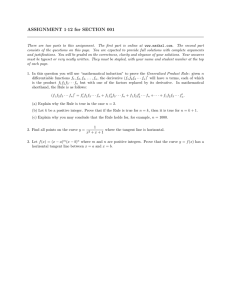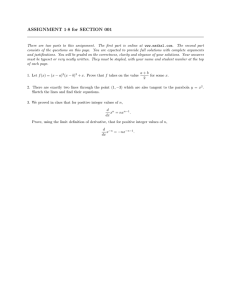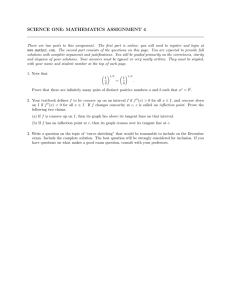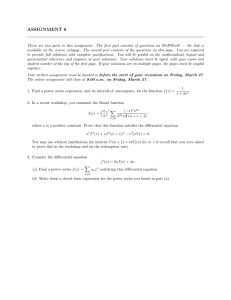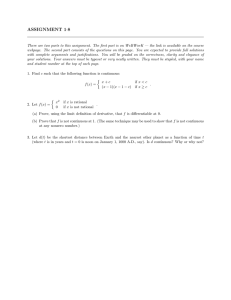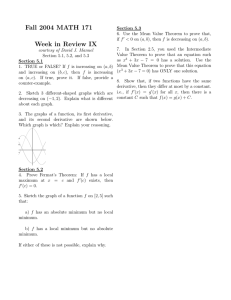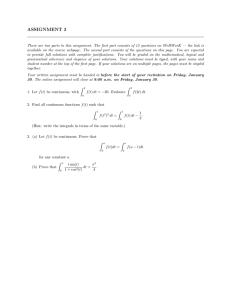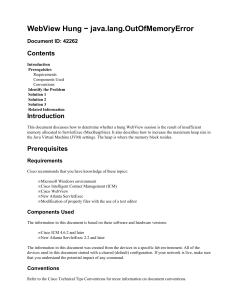SCIENCE ONE: MATHEMATICS ASSIGNMENT 5 (Due Nov. 16, 2011)
advertisement
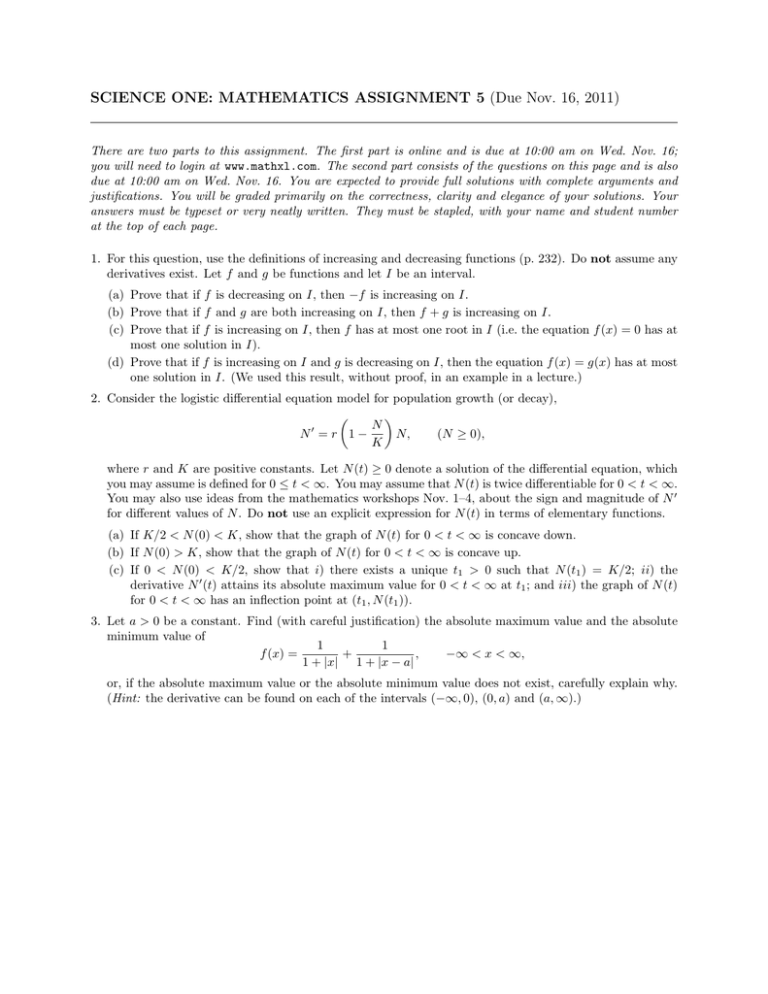
SCIENCE ONE: MATHEMATICS ASSIGNMENT 5 (Due Nov. 16, 2011) There are two parts to this assignment. The first part is online and is due at 10:00 am on Wed. Nov. 16; you will need to login at www.mathxl.com. The second part consists of the questions on this page and is also due at 10:00 am on Wed. Nov. 16. You are expected to provide full solutions with complete arguments and justifications. You will be graded primarily on the correctness, clarity and elegance of your solutions. Your answers must be typeset or very neatly written. They must be stapled, with your name and student number at the top of each page. 1. For this question, use the definitions of increasing and decreasing functions (p. 232). Do not assume any derivatives exist. Let f and g be functions and let I be an interval. (a) Prove that if f is decreasing on I, then −f is increasing on I. (b) Prove that if f and g are both increasing on I, then f + g is increasing on I. (c) Prove that if f is increasing on I, then f has at most one root in I (i.e. the equation f (x) = 0 has at most one solution in I). (d) Prove that if f is increasing on I and g is decreasing on I, then the equation f (x) = g(x) has at most one solution in I. (We used this result, without proof, in an example in a lecture.) 2. Consider the logistic differential equation model for population growth (or decay), N 0 N, (N ≥ 0), N =r 1− K where r and K are positive constants. Let N (t) ≥ 0 denote a solution of the differential equation, which you may assume is defined for 0 ≤ t < ∞. You may assume that N (t) is twice differentiable for 0 < t < ∞. You may also use ideas from the mathematics workshops Nov. 1–4, about the sign and magnitude of N 0 for different values of N . Do not use an explicit expression for N (t) in terms of elementary functions. (a) If K/2 < N (0) < K, show that the graph of N (t) for 0 < t < ∞ is concave down. (b) If N (0) > K, show that the graph of N (t) for 0 < t < ∞ is concave up. (c) If 0 < N (0) < K/2, show that i) there exists a unique t1 > 0 such that N (t1 ) = K/2; ii) the derivative N 0 (t) attains its absolute maximum value for 0 < t < ∞ at t1 ; and iii) the graph of N (t) for 0 < t < ∞ has an inflection point at (t1 , N (t1 )). 3. Let a > 0 be a constant. Find (with careful justification) the absolute maximum value and the absolute minimum value of 1 1 f (x) = + , −∞ < x < ∞, 1 + |x| 1 + |x − a| or, if the absolute maximum value or the absolute minimum value does not exist, carefully explain why. (Hint: the derivative can be found on each of the intervals (−∞, 0), (0, a) and (a, ∞).)
